During our trip in Peru, we saw many examples of Inca architecture, which features precisely cut and shaped stones closely fitted without mortar. The above picture was taken in a street of Cuzco, the erstwhile capital of the Incas. The Inca’s masonry methods are essentially lost, though many scientists have tried to explain how the Incas transported these large stones, cut them precisely so that they could be fitted together without mortar, and assembled them. Even more amazing these structures have withstood seismic events over the centuries. In the streets of Cuzco, there is the famous 12-sided stone found in a wall of the palace of the Inka Roca. It is a striking testament to the dedication and ability of the Inca masons to cut unusual shapes and fit them tightly together into a large interlocking puzzle.Can you count the 12 sides?
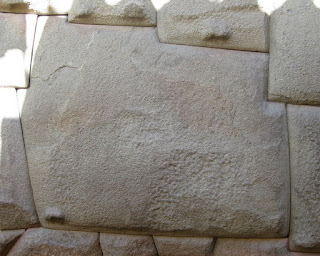
In this blog I will attempt to give examples of Inca masonry art that we saw on our trip. We visited various historical sites that capture the masonry skills of the Incas : Saqsayhuaman, a religious archaeological site near Cuzco; Ollantaytambo, an Inca town in the Sacred Valley of the Incas; and of course Machu Picchu, the famous citadel constructed by the Incas. The first example is from the site of Saqsayhuaman (when our guide Francis first mentioned this site I thought he said “sexy woman”). The two picture below are some examples of the interlocking puzzle of enormous stones. Our guide, Francis, in the foreground provides a perspective of how large the stones are in the wall behind him.

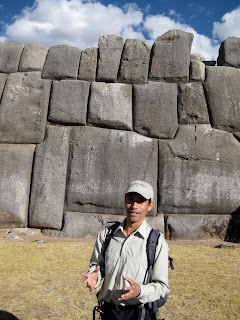
Machu Picchu, an Inca site that was never vandalized by the invading Spaniards, has many examples of the various stylistic forms that can be found in Inca architecture. Wall apertures, including doors, niches and windows, were usually built in the form of a trapezoidal shape, with sides tapering inwards towards the lintel (name for the horizontal block at the top). Note: the Incas had not discovered the principle of the arch, so a tapered trapezoidal shape was the logical way to spread the weight of the lintel, while at the same time reducing its length. In the following pictures you see examples of a trapezoidal door, wall nitches, and windows.


The last picture is the “Three-Windowed Temple” at Machu Picchu. Here you see examples of trapezoidal windows (It appears that the original design called for five windows but two at the ends were later filled in). In this case the sides of trapezoidal windows were built up with ashlars (a piece of rock hewed to a particular shape for a special purpose).Another architectural feature the Inca masons used was to blend their structure with the natural curves of the existing rock. This minimalistic style is very striking and elegant in its simplicity. The sun temple at Machu Picchu, shown in the pictures below, illustrates this wonderful austere design technique.


The Ollantaytambo Inca monument is located at 2600 m above sea level. It contains the unfinished Temple of the Sun. The site overlooks the ancient Inca village of Ollantaytambo which was second to Cuzco in importance during the Inca era. Ollantaytambo is about 75 kilometers from Cuzco.To reach the Temple of the Sun, one starts at the village of Ollantaytambo, and then you navigate up a series of terraces, as seen in the pic below:

The view of the valley from the Temple of the Sun is spectacular.
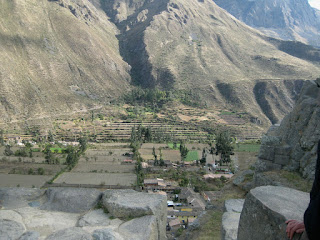
The masonry at the Temple of the Sun is exemplified by the six standing red granite monoliths that were to be part of an unfinished circular wall. To prevent the monoliths from collapsing during seismic events, the monoliths are separated by “spacer rocks”. The monoliths also contain high relief carvings of sacred images. The relief in the foreground of the image below is of a puma head. On can get a sense of the size of these monoliths by noting the relative height of the barrier for visitors which is at waist level!
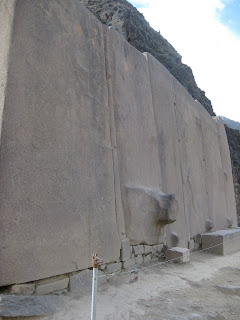
A close-up of the spacer rock between the monoliths is shown in the image below.
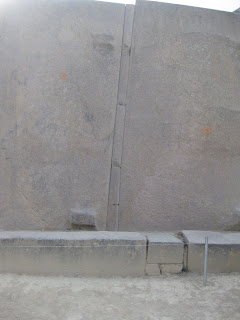
Because the site was unfinished there are wonderful examples of how the Inca masons prepared the granite rocks to achieve their interlocking puzzle-like effect. In this image which shows the tight fitting interlocking rocks in a wall, one might assume that the inner surfaces, hidden from view, do not fit precisely, and the gaps are filled with mortar or small pebbles.
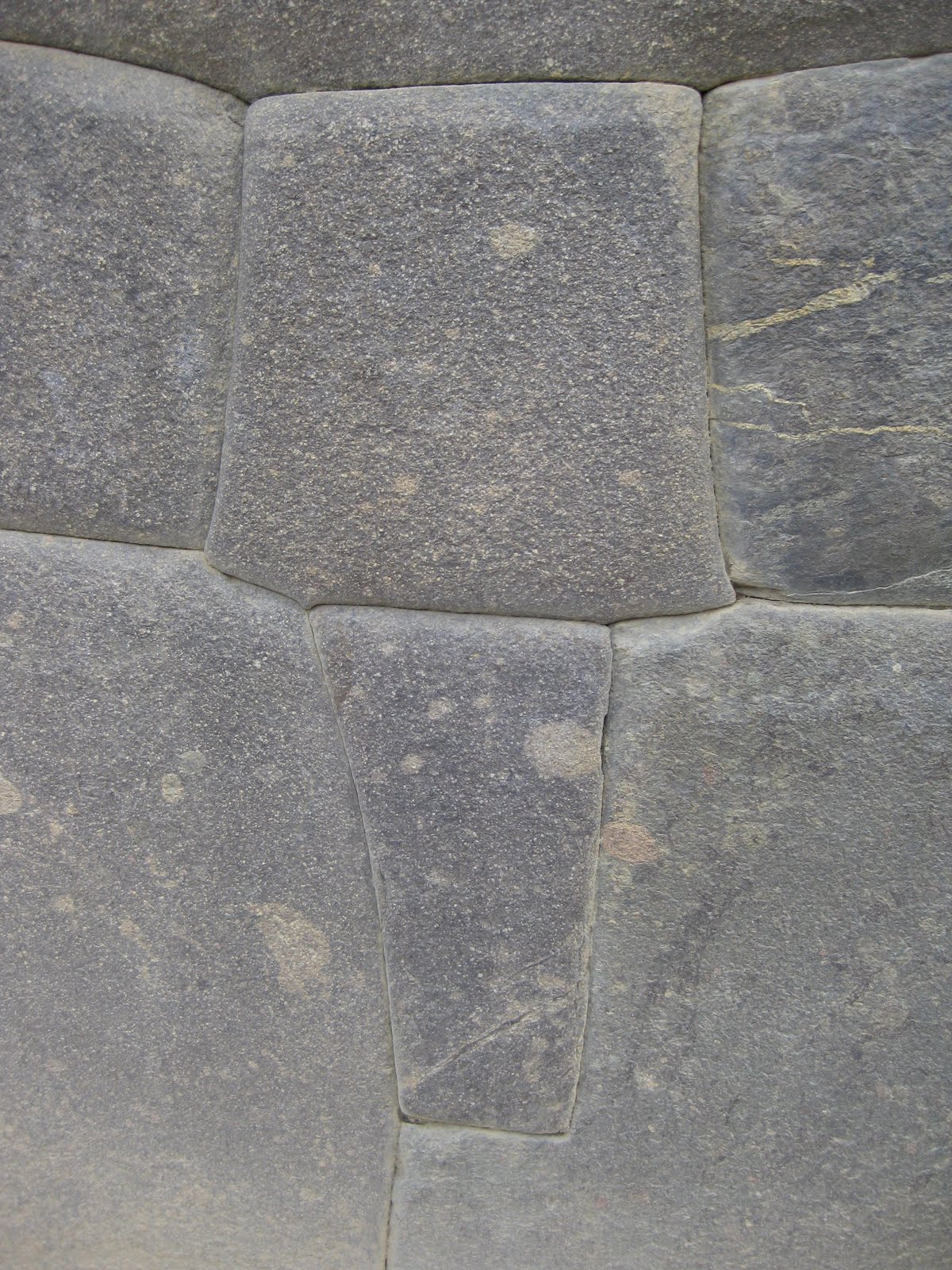
But this is not the case. In this image one sees the shaping of the inner rock surfaces that would be hidden when the rocks are assembled. Thus not only are the outer surface perfectly matched but so also are the inner surfaces.









 Photographer Finds Locations Of 1960s Postcards To See How They Look Today, And The Difference Is Unbelievable
Photographer Finds Locations Of 1960s Postcards To See How They Look Today, And The Difference Is Unbelievable  Hij zet 3 IKEA kastjes tegen elkaar aan en maakt dit voor zijn vrouw…Wat een gaaf resultaat!!
Hij zet 3 IKEA kastjes tegen elkaar aan en maakt dit voor zijn vrouw…Wat een gaaf resultaat!!  Scientists Discover 512-Year-Old Shark, Which Would Be The Oldest Living Vertebrate On The Planet
Scientists Discover 512-Year-Old Shark, Which Would Be The Oldest Living Vertebrate On The Planet  Hus til salg er kun 22 kvadratmeter – men vent til du ser det indvendigt
Hus til salg er kun 22 kvadratmeter – men vent til du ser det indvendigt  Superknepet – så blir snuskiga ugnsformen som ny igen!
Superknepet – så blir snuskiga ugnsformen som ny igen!  Meteorite That Recently Fell in Somalia Turns Out to Contain Two Minerals Never Before Seen on Earth
Meteorite That Recently Fell in Somalia Turns Out to Contain Two Minerals Never Before Seen on Earth  Nearly Frozen Waves Captured On Camera By Nantucket Photographer
Nearly Frozen Waves Captured On Camera By Nantucket Photographer  It’s Official: Astronomers Have Discovered another Earth
It’s Official: Astronomers Have Discovered another Earth 